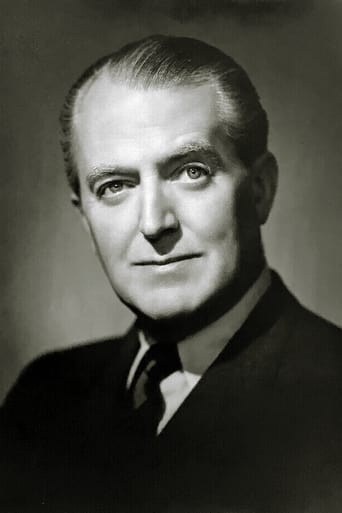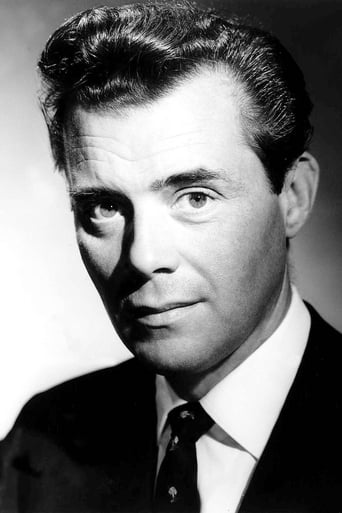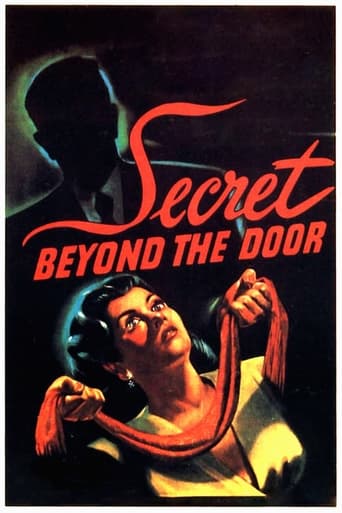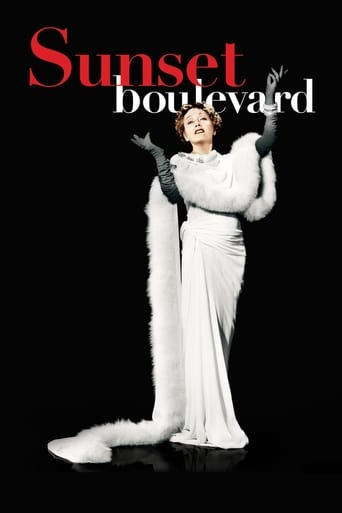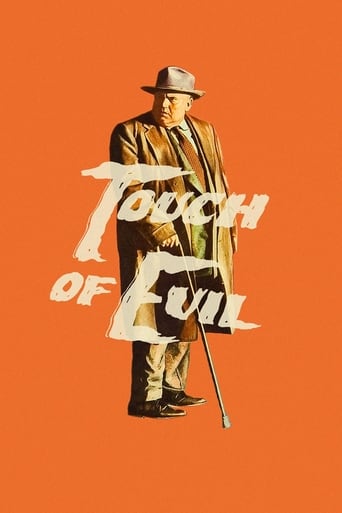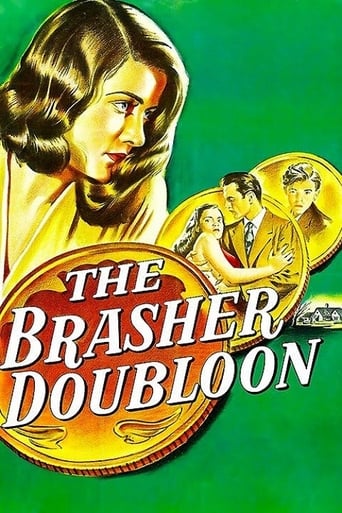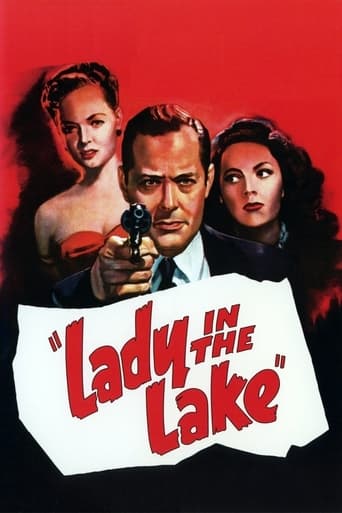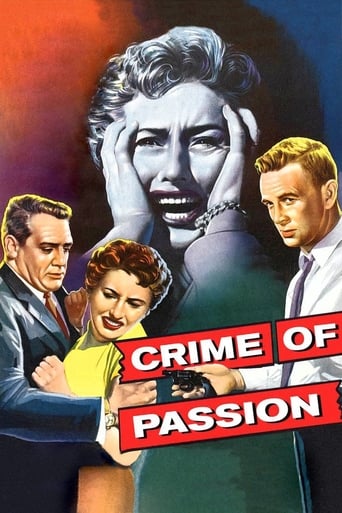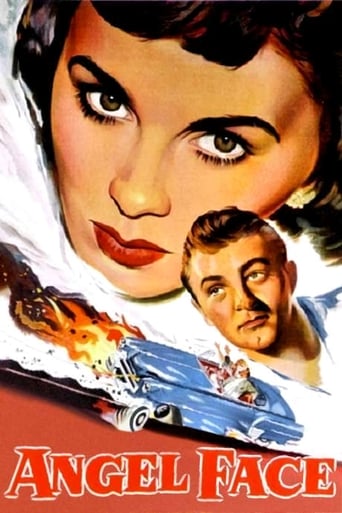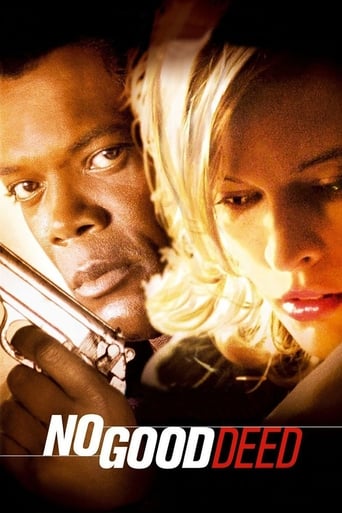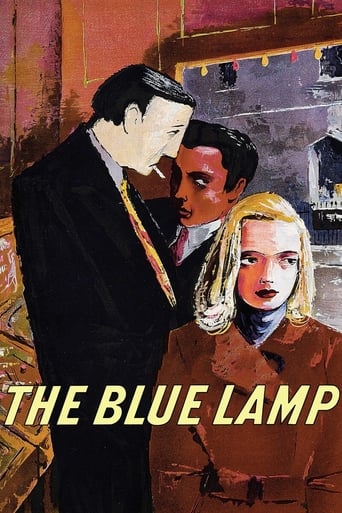
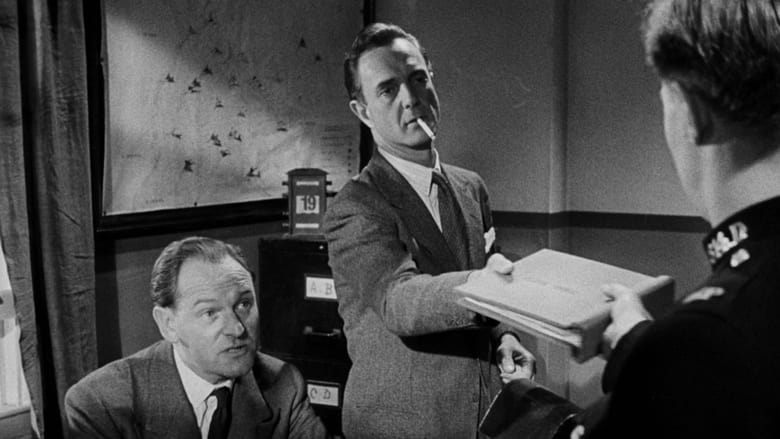
The Blue Lamp (1950)
P.C. George Dixon is a long-serving traditional copper who is due to retire shortly. He takes a new recruit under his aegis and introduces him to the easy-going night beat. Dixon is a classic ordinary hero but also anachronistic, unprepared and unable to answer the violence of the 1950s.
Watch Trailer
Cast


Similar titles
Reviews
A non-comedy Ealing Studio production dedicated to the men and women in the police service of Britain, Basil Dearden's THE BLUE LAMP, whose title is a metonymy of police station, vehemently blends its realism milieu, the increase of post-war crime, with defiantly positive vibes around a virtuous constabulary, the constituents of their vocation runs the gamut from a nattering lady's lost dog to a deadly gun-point encounter with a reckless misfit Tom Riley (Bogarde). PC George Dixon (Warner) is a veteran copper on the verge of retirement, but accepts to stay on his beat for an additional 5 more years with alacrity. In spite of Ms. Dixon's (Henson) initial reluctance, he offers lodging to a newly recruited PC Andy Mitchell (Hanley), who is exactly the same age of his son they lost in the war, and the trio actually gets along pleasantly and forms an ersatz family. On the same beat, Tom Riley and his partner-in-crime Spud (Doonan) are the peace- disturbing pests, from home-invasion, jewelry robbery to a stick-up in a cinema's wicket goes terribly wrong, George, a foolhardy hero who doesn't even bat an eyelid in the face of a loaded revolver, is shot by Tom and later dead in the hospital. There is an affecting naiveté in George's attempt of talking Tom out of his transgression, which we couldn't bear thinking about nowadays, that is how far our society have been degraded since then. The rest of the story is to track down the perpetrator unbeknownst to the police through an assiduous and judicious procedural, mostly predicated on the lead of Tom's girlfriend Diana Lewis (a 29-year-old Peggy Evans in a full-on victim mode of cluelessness, trepidation and hysteria, but she simply cannot pass off as a 17-year-older, no matter how much silver-screen glamour is vamped up on her), and galvanized by Tom's unexpectedly bold move, walking into the police station in broad daylight and feigning innocence through his wiles, the film pumps up its tension in a blistering car-chasing money shot in a suspiciously empty London, and slates its spectacular finale inside a jam-packed stadium where a dog race is in full swing and semaphore is signaled on the strength of a collective sense poetic justice, the film is rounded off with a slam-dunk fulfillment. Jack Warner and Jimmy Hanley both give straight-up appearances of ordinary coppers with a heart, Robert Flemyng as Police Sgt. Roberts and Bernard Lee as Inspector Cherry are the brains in the work, both can actualize a glint of reactionary cognizance with nicety, but indeed, it is Dirk Bogarde's dodgy villain gets the biggest canvas to run away with all our attention and admiration through his insidious beguilement. For what it is worth, THE BLUE LAMP is a solid testimony of Dearden's cinematic aptitude and craftsmanship and harks back to a bygone era when the two sides of the law are still distinctively black or white.
During my teenage years in the seventies I was frequently being told by my elders and betters that they didn't know what the younger generation was coming to and that the young people of that era were a bunch of unruly, disrespectful, irresponsible long-haired hooligans. On the evidence of this film, however, it would appear that public concern about juvenile delinquency did not begin in 1970, or even 1960, and that my grandparents' generation regarded their own offspring, the teenagers of the forties and fifties, as a bunch of unruly, disrespectful, irresponsible hooligans. (But not long-haired. Among my father's generation long hair was seen as a sign of effeminacy rather than of hooliganism or rebelliousness)."The Blue Lamp" was made by Ealing Studios, but it is very different from the comedies which formed their best-known fare at the time. It is a police drama, made in a semi-documentary style complete with voice-over from an invisible narrator. (The title refers to the blue lamps which traditionally hung outside British police stations). It is set in and around the real-life Metropolitan Police station at Paddington Green in West London and follows the activities of a group of (fictitious) police officers, especially the experienced veteran PC George Dixon and the young rookie PC Andy Mitchell. At first their work seems routine enough; their main concern is investigating the disappearance from home of a teenaged girl named Diana Lewis. They discover that Diana is living with her boyfriend Tom Riley, a young hoodlum, but as she is seventeen and has broken no laws, they are unable to compel her to return to live with her parents.In the second half the film becomes less of a documentary and more of a social realist thriller. Tom and another young criminal rob a local cinema. Dixon, called to the scene, confronts Tom and is gunned down. The film then turns into a tense chase thriller, in which the remaining officers from the station try to hunt down Tom and his accomplice, a hunt which becomes all the more urgent when news reaches them that Dixon has died in hospital. (This development comes as a shock to the audience; the scriptwriter T. E. B. Clarke, himself an ex-policeman, was leading them to believe that the injured man was making good progress).Although Dixon dies in this film, he was to have a happy afterlife. Five years after the film was made in 1950, he was resurrected as the title character in the TV series "Dixon of Dock Green", played by the same actor, Jack Warner. (The series was not set in Paddington Green but in the fictitious London district of Dock Green, supposedly in the East End). This was to become one of the longest running and most popular programmes on British television, and ran until 1976, by which time Warner was 80 years old! (Even in 1950 he was looking a bit too old to play a police constable). "The Blue Lamp" also inspired another film, "I Believe in You", which was also directed by Basil Dearden and told a similar semi-documentary tale about the work of the Probation Service.The star of the film is not really Warner, a likable actor but a rather stolid one, but Dirk Bogarde as Tom. The film's thesis is that the main problem facing British society in the late forties and early fifties was not so much organised crime as disorganised crime, perpetrated by angry, disaffected young men whose early lives had been turned upside-down by a war fought between their elders. These men were often more volatile and unpredictable, and therefore more dangerous, than the traditional London underworld who generally avoided using guns because they knew that the justice system would show no mercy to those who killed in the furtherance of crime. (Britain still had the death penalty at this period). Bogarde's Tom Riley is a fine example of this new breed of criminal- a cocky, arrogant and amoral Jack the Lad, consumed by an intense but unfocused anger directed against the world in general, and irrationally convinced of his own superiority and infallibility.The film was highly popular when first released, and with good reason; Bogarde is excellent and the thriller elements generate considerable tension. Some at the time, however, criticised it (a criticism which has continued to be made down the years) for presenting a too idealised image of the police as white knights and a too schematic "cops good, robbers bad" viewpoint. Such a moral structure was by no means uncommon at this period- it can also be found, for example, in the American film noir "White Heat" from the late forties. I do wonder, however, if the "Blue Lamp" view of law enforcement was responsible for a real-life miscarriage of justice.In 1952 two teenagers, Derek Bentley and Christopher Craig, set out to burgle a warehouse in Croydon. They were confronted by a police officer, Sidney Miles, who was shot dead. Craig, who actually fired the fatal shot, was too young to face the death penalty, but his older accomplice Bentley was hanged even though he was mentally handicapped and even though the evidence that he had incited Craig to shoot was disputed and ambiguous. There were a number of similarities between this real-life crime and the fictional one depicted in "The Blue Lamp" two years earlier, and I have wondered whether these might have misled the jury into seeing Bentley- a misguided simpleton- as a slightly younger version of the vicious killer Tom Riley. We will never know the answer to this question for sure, but I feel the possibility cannot be ruled out. 8/10
There are plenty of good reasons to watch THE BLUE LAMP, but let's face it. Nobody does crime stories of this type better than the film noirs Hollywood was churning out during the '40s, such as THE NAKED CITY. Furthermore, DIRK BOGARDE's brash and cocky punk seems like an effort to make him look like a James Cagney thug with a British accent. It's almost disconcerting to watch him in this sort of tough guy role.He does have that menacing presence and overall it's a good, crisp performance as the hood who, during a hasty and ill prepared robbery, shoots a copper and spends the rest of the film running away from the law. The sequence that has him turning up at the police station is rather puzzling in way of motivation when he becomes an immediate suspect.Excellent support from BERNARD LEE, JACK WARNER and PEGGY EVANS helps a good deal, except that Evans' hysterics seem a bit over-the-top at times. Bogarde's restraint plays against her hysterics in an effective way.Worth seeing, but not the sort of film that one would think deserves a Best Film award from BAFTA. Times have certainly changed and altered perception of crime films such as this one.
This entry has far more value as social history than as a sentimental melodrama. It was just one of many made shortly after the Second World War that showed London as it was, punctuated by bomb craters and debris and it wouldn't be exaggerating too much to state that the 'human' stories grafted onto this background pre-dated the 'kitchen-sink' movement which took hold - at least under that banner - in the mid-fifties. Here it's very much the mixture as before; the police are all knights in shining armour loving nothing more than setting a trearaway straight with a clip on the ear and some fatherly advice and the villains arrogant and disrespectful, full of themselves. Somewhere along the way Dirk Bogarde robs a jewellers and a cinema, kills a policeman and pays the price. Life goes on. If only it were still that simple. Nostalgia value only.


